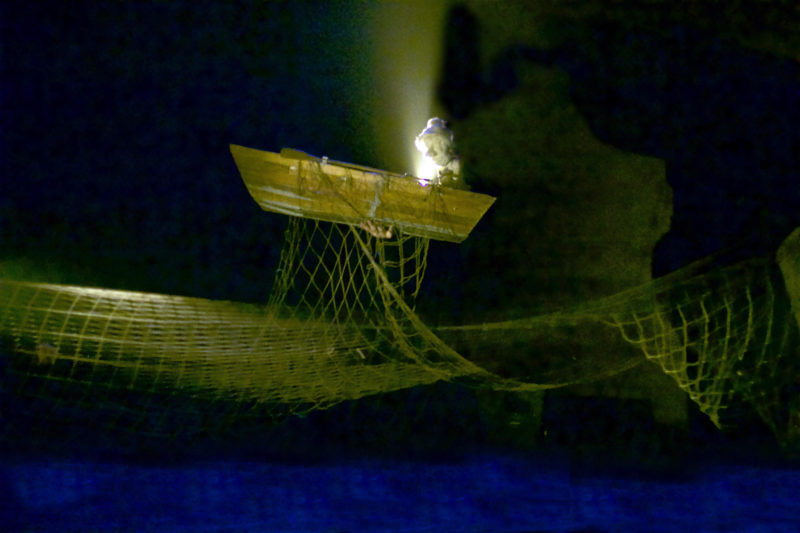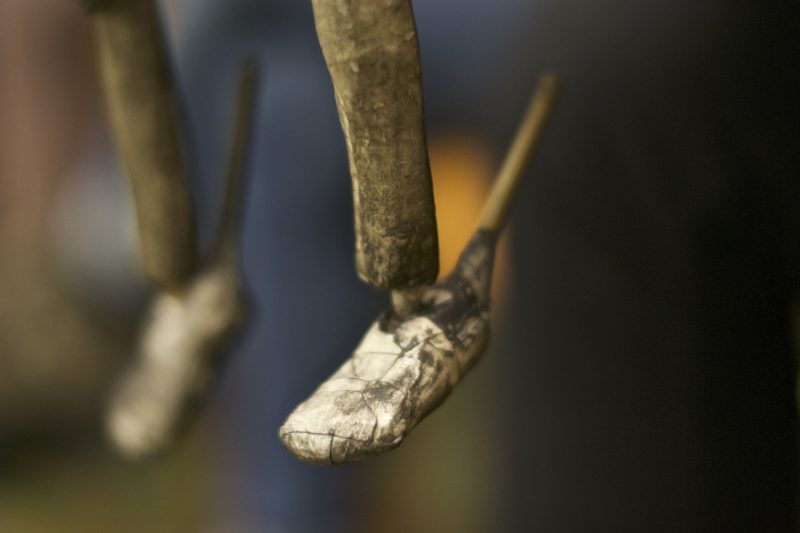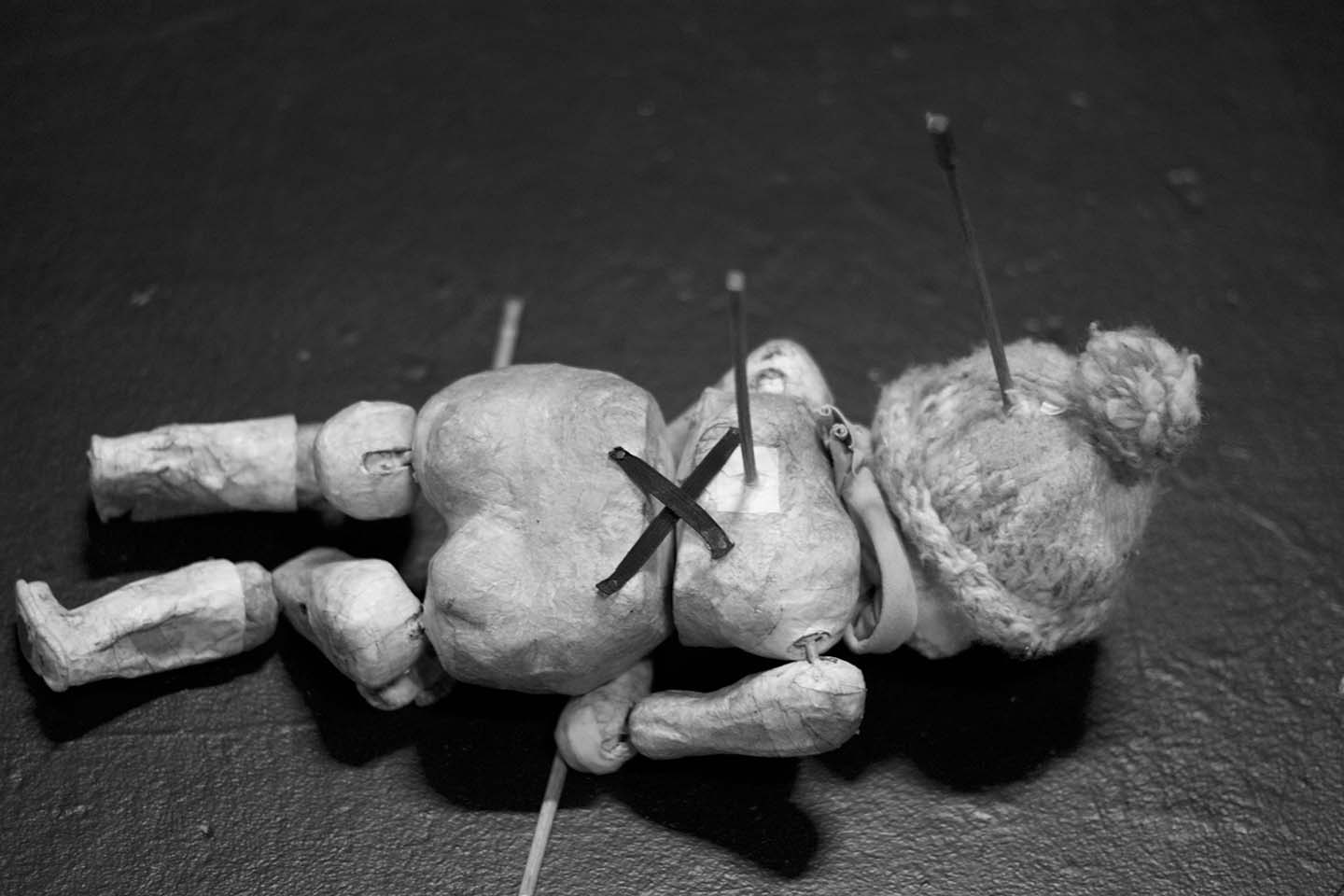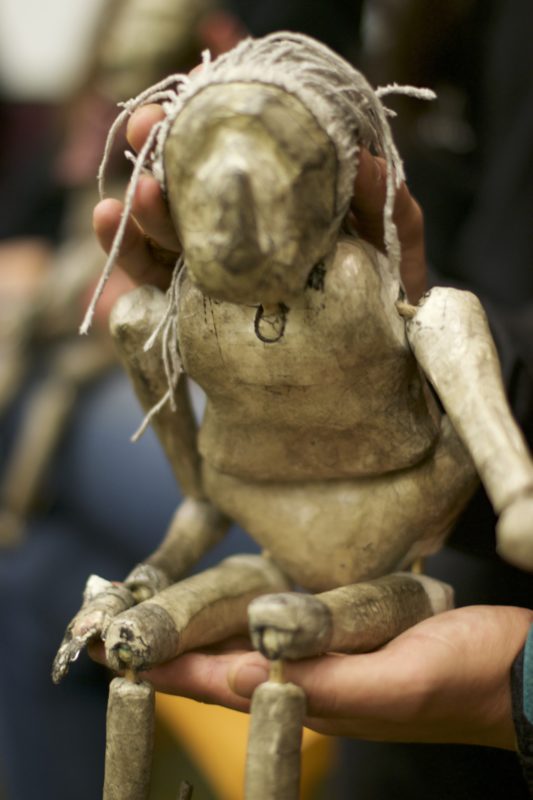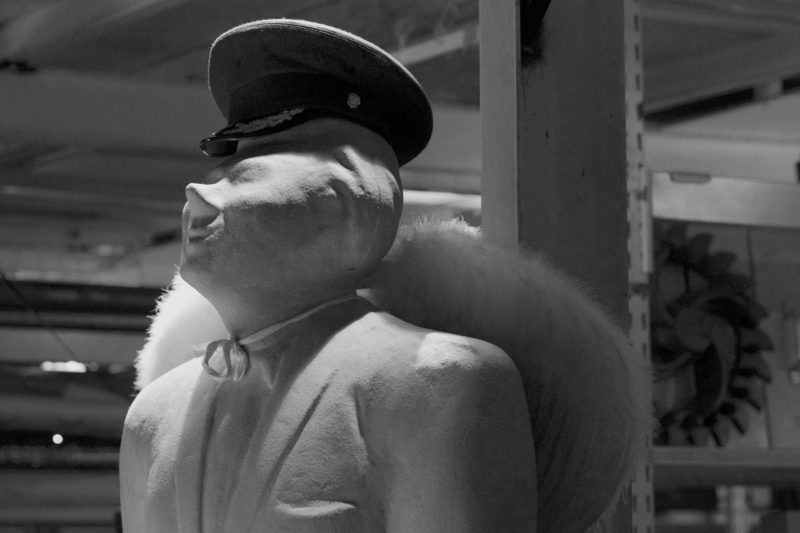
The German word Entschleunigung is, like so many of our words, hard to translate. It refers to a general slowing down, but it also implies intention about dialing down the speed. It has a mate, Entleerung. That means an emptying, again a willful purge of what’s not deemed essential.

These terms came to mind when I watched Silencio Blanco’s recent performance of Pescador/Fisherman. The group of 7 young puppeteers from Chile is on a return visit to Portland presented by Boom Arts, showing their newest creation at Imago Theatre.https://silencioblanco.cl/en/home-eng/







Like any terrific work of art, their play works on a multitude of levels. The dialogue-free story line (as I interpreted it) is simple: Fisherman Federico arduously launches his small skiff, rows out to the fishing grounds, throws the net. Low booming horns and colonies of seagulls announce the approach of a huge trawler, the kind that is surrounded by these many greedy birds hoping for scraps. The huge waves created by the industrial fishing boat tear Federico’s net to pieces, and fling his little skiff into an abyss of motion. The plucky fisherman survives the ordeal and makes it back to the dock, shaken but determined.

That’s it. For 45 minutes you are immersed in a slowly, languidly developing universe of minimalist action, a visual landscape and soundscape that unfolds before your eyes, drawing you in in mesmerizing ways. The props are but the puppet, a wooden pier, the boat and net and a technically impressive bunch of linked birds flapping their way across the ocean. The sound consists of repeated wave action rising and falling depending on the narrative, the ship horns, gull cries and a few interludes of music enhancing or easing the tension. The occasional grunts or coughing of the fisherman add a human element that soon makes you feel that he is real, weary and cold.



It all happens in darkness, with enough light to be aware of the carefully choreographed movements of the puppeteers who become part of that universe of waves. Their flowing, watery movement, ebbing and cresting, a boat quite literally thrown through the air, is a heavy physical performance on top of making a puppet come to life.




On one level the simplicity opened a space for being, not thinking, becoming part of a created universe. Best evidence for this was brought to me by my seat neighbors of the under-10-year-old set whose early wiggles were completely calmed down during the performance to sitting still in rapt, sustained attention.

On another level, the simplicity provided a veil for the complexity underneath, leaving it up to the viewer to decide to leave it on or take it off to explore what’s hidden. You had a choice to simply experience an individual narrative, in other words, or to probe the context in which this tale unfolds. The latter is, of course, requiring effort. Puppetry, as we experience it today, no longer has the privilege it once enjoyed: audiences who either watched fixed familiar roles (think Judy&Punch or the German equivalent, Kasperle Theater) or watched known tales set in familiar landscapes, story books. The absence of dialogue, so valuable to reach international audiences, as Silence Blanco increasingly – and deservedly! – does, also prohibits the spelling out of contextual details.

Which, in the case of Chilean fisheries, is a tragic tale, wouldn’t you know it. The details can be found in the links attached below, but here’s the punch line: The fish supply has been dwindling due to over-fishing and pirate fishing. The government comes up with half hearted measures to control quotas, but has been upping them recently again, turning a blind eye to the crisis. “The quotas weren’t divided evenly, either. Chile’s 92,000 artisanal fishermen got 40 percent of the country’s total catch. The industrial fleet, which is owned by just seven wealthy families, took the remaining 60 percent.”https://www.ecowatch.com/pirate-fishing-chile-2615164866.html

The latest tales about attempts to find a balance between marine protection and commercial interests can be found here:https://www.smithsonianmag.com/science-nature/chile-protects-massive-swath-ocean-new-marine-parks-180968275/
I leave it up to the reader to discern how much this is a fig leaf, not affecting the purge of artisanal fisheries by industrial interests. There are certainly accounts of aggressive action against individual fishing communities standing in the giants’ way.

Silencio Blanco has a working model that puts research at the local level at the start of their creation. They spend time with the people they portray, in the locations that are their focus. They then build their small tool kit of props, and, for this particular performance, have developed choreography as well. They work hard. I saw them fully rehearse the play a morning after they had performed and 3 hours before they were on for the next round, relentlessly practicing the moves and transitions.






For me it was a visual feast, but more importantly a reminder how art can be a political catalyst, making us, when it is at its best, think and, in this case, expose us to international issues that we otherwise ignore in our little PDX oyster.
You have another chance to see for yourself:
February 8th: 7pm/ February 9th: 3pm – Imago Theatre, 17 SE 8th Ave, Portland
Tickets Here:http://www.boomarts.org

https://www.youtube.com/watch?v=w8UGs0rdhq8
Music today (above) is Sergio Ortega’s resistance song that accompanied Salvador Allende’s Popular Unity government from 1970 – 1973 – much good did it do the latter. When I visited Santiago in 1975 the city was still visibly riddled with Pinochet’s butchers’ bullet holes. Ortega was able to flee to France; the Nueva Cancîon Movement’s most famous musician,Victor Jara, was murdered – https://www.youtube.com/watch?v=GN_M3u7GWgo

Here is his voice:https://www.youtube.com/watch?v=Nhak9bEyjwA
And here for the truly interested is a short film on fishermen organizing and the syndicates… with lots of good old revolutionary songs.

